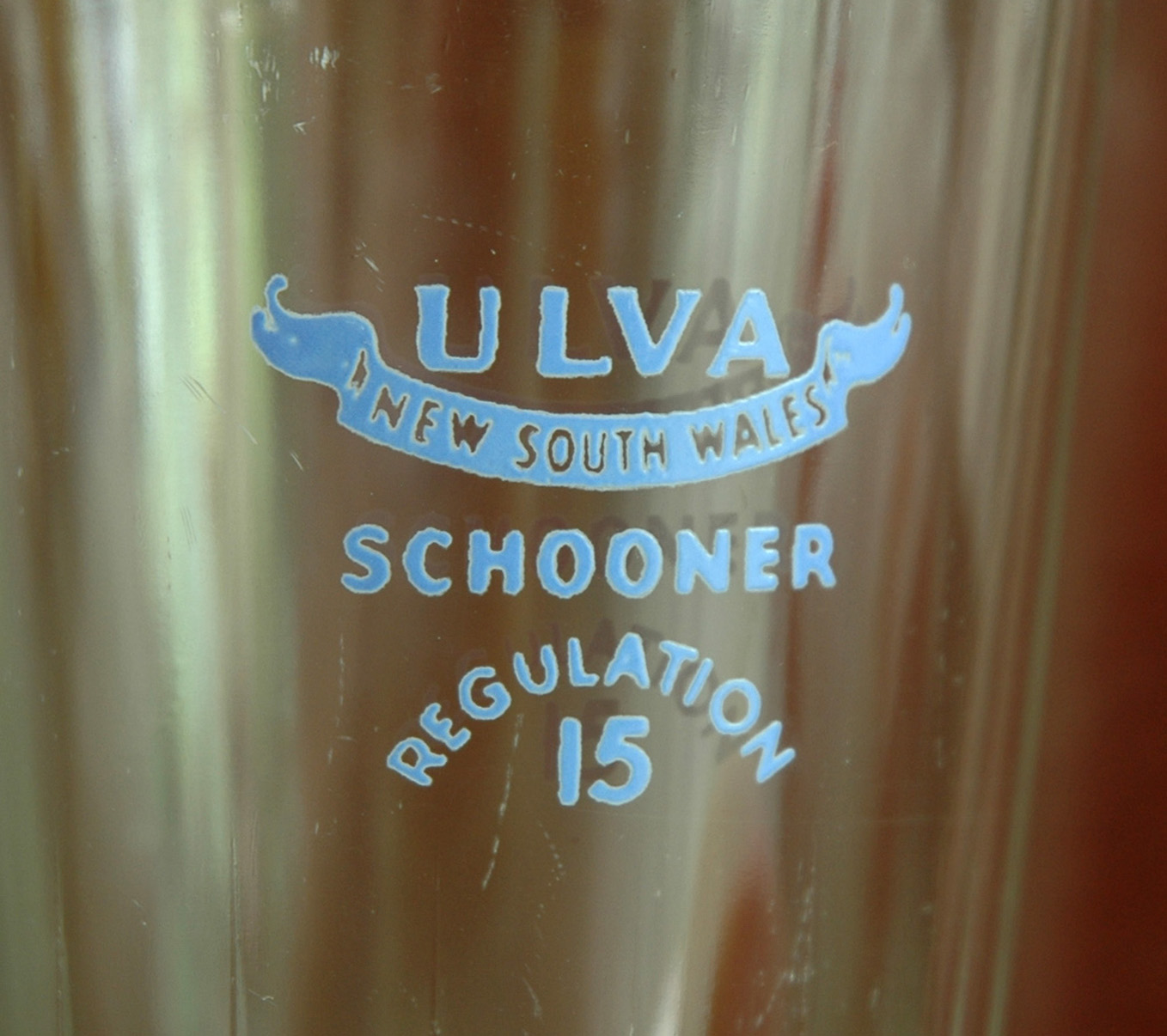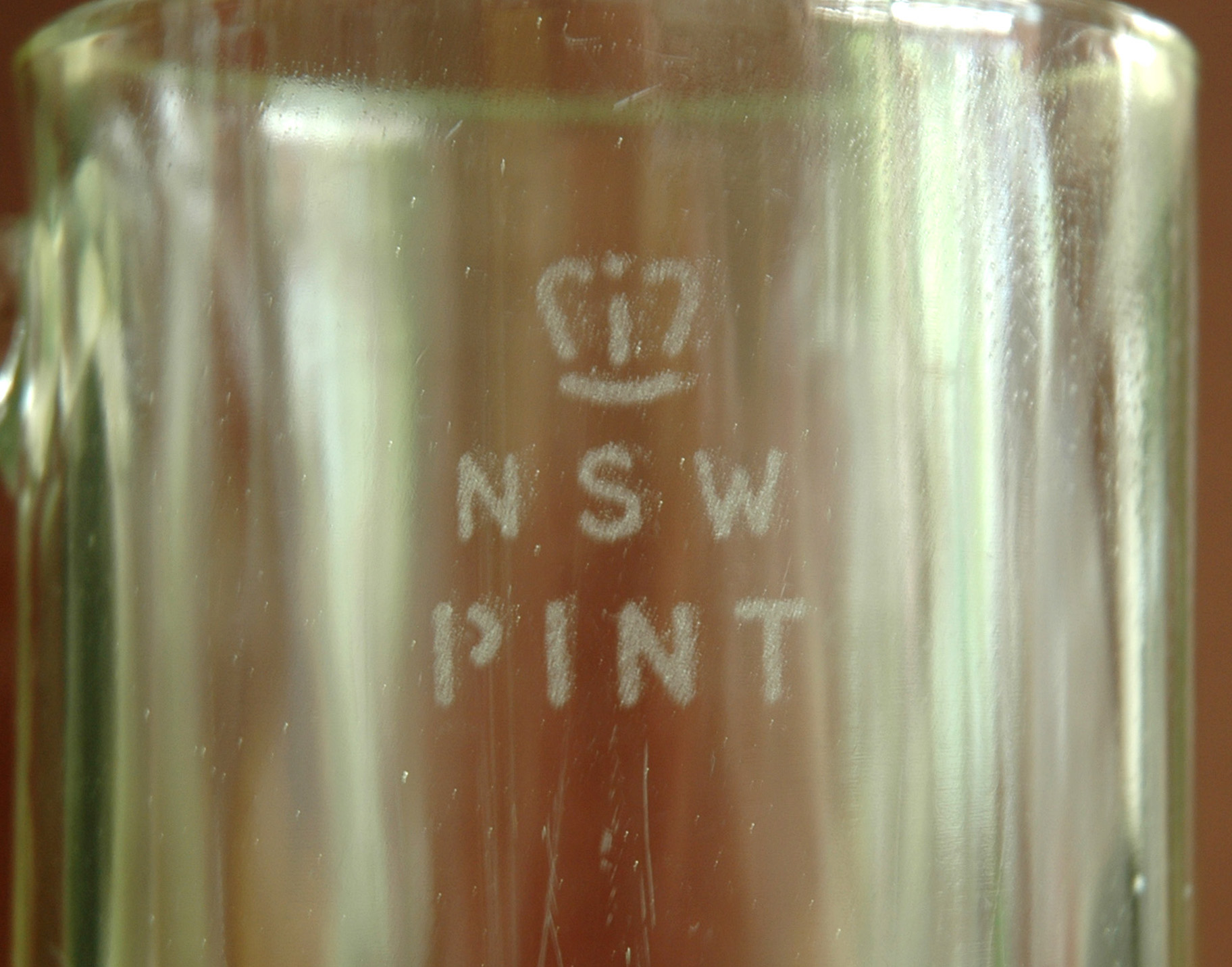
Schooner Wars
For centuries the Poms have drunk their ale from regulation pint and half-pint measures, but as a result of recent legislation, UK publicans will now also be allowed to fill intermediate-sized glasses of about two-thirds of a pint capacity.
This recent decision has generated much excited comment in both the UK and in Australia. It is not simply the size of the new glass and the break with long tradition, however, that have the Pommies all astir. More worrying is the fact that the glass in question is an Australian-style vessel—the well-known ‘schooner’. Some English commentators fear that adopting the new beer measure will give the Aussies their revenge for their recent thrashing in the cricket, especially if the victors have to toast their success in schooners.
While it may be correct to call the schooner an Australian beer measure, its use has only recently become widespread in this country. For instance, it has not been used traditionally in either Tasmania or Queensland. In South Australia the term schooner is applied to a much smaller vessel (10 fluid ounces/284ml), while the glass that elsewhere would be called a schooner (15 fluid ounces/426ml) is termed a ‘pint’, or more correctly a ‘reputed pint’—but that is another story.
Tracing the history of the schooner glass (let alone of beer glasses in general) in Australia requires more than just a short article, so this account is limited mainly to the use of the term in New South Wales. In that state the schooner was formally adopted as a standard beer measure on 1 November 1948, which is when a new clause in the state’s Liquor Act concerning beer glasses came into effect. The new clause stated that no holder of a publican’s licence could supply any ‘malt liquor’ for consumption on the premises except in a glass ‘sized to contain five, or ten, or fifteen, or twenty fluid ounces’ (142ml, 284ml, 426ml, 568ml). As a pint comprised twenty fluid ounces, this regular series of measures contained one-quarter, one-half, three-quarters, and one pint.
Prior to the standardisation of beer glass sizes in 1948, the position in New South Wales had been irregular for many years. The term ‘schooner’ was in common use in Sydney by the early 1930s when it was applied to an unstamped and unofficial glass of variable capacity, but containing somewhat less than a pint. The origin of the term, although unknown, is suggested by the comments of a magistrate in a 1931 Sydney court case. A city publican was proceeded against for supplying a schooner of beer instead of a pint. The aggrieved customer was found to be legally entitled to a full pint in a stamped measure if he asked for a pint; he should receive a ‘full-rigged ship’, not a lesser fore-and-aft rigged schooner.
At the outbreak of the Second World War in 1939, beer in New South Wales was retailed in glasses of three different sizes: 20 ounces (pint), 13 ounces (369ml) , and 9 ounces (255ml). There was also a schooner glass, but this seems then to have been a pint measure, differing from a normal pint ‘pot’ by its lack of a handle. It was not ‘full-rigged’ in a different sense. This provides another possible origin of the term ‘schooner’, i.e it was named for its shape (tall, slender and unadorned with a handle) rather than its capacity. The pint, at this time, was the only official beer glass size in New South Wales; any smaller sizes in use were unregulated, but the law required the service of a full Imperial pint if demanded.
In response to an increase in beer excise late in 1939—soon after the war began—New South Wales hotelkeepers reduced the size of 13 and 9 ounce glasses to 12 and 8 ounces (340ml/227ml) to partly offset the increased tax. This was the first of a series of wartime changes to beer glass sizes that seem to have included the standardisation of the schooner at 17 ounces (483ml), and then its reduction to 16 ounces (454ml) in 1941.
In March 1942, as a wartime rationing measure, production of beer in Australian breweries was reduced to two-thirds of normal output. In conjunction with this measure, and to assist in the orderly rationing of beer to consumers, pint glasses were eliminated from New South Wales pubs. Other glass sizes, namely the recently-created 16-ounce schooner and the reinstated 9-ounce middy, were retained.
Restrictions on the use of schooners were introduced late in 1942 as a further rationing measure. Publicans were given the right to refuse to serve beer in schooners except during the busiest period of the day, namely the couple of hours before closing time at 6pm. This was meant to reserve beer for times when it was most in demand. In the industrial city of Newcastle, however, this penalised a large body of workers, including steelworkers, waterside workers and coal miners, who knocked off from their shifts well before 4pm. The resulting protests and industrial stoppages early in 1943 became known as the ‘schooner war’.
Pint glasses did not immediately reappear at the end of the war. Close consideration was given, however, to the whole question of beer glass sizes. The United Licensed Victuallers’ Association (ULVA), the publicans’ body, and forerunner of the Australian Hotels Association (AHA), proposed to reduce the size of the schooner from 16 to 13 ounces. The Commonwealth Prices Commissioner agreed, saying that this still left New South Wales with the largest glass in the country. Victoria’s maximum was then an 11-ounce glass (312ml). Orders were placed with a large Sydney glass manufacturer for supplies of the proposed new 13-ounce glasses, but glass workers refused to make them, believing that the smaller glasses were really only a sneaky means of increasing brewery profits.
The liquor trade more broadly was overhauled after the war, and a new liquor bill was prepared and presented to parliament in 1946. Among many changes was the adoption of four standard sizes for beer glasses: 5 (pony), 10 (middy), 15 (schooner) and 20 (pint) fluid ounces. The latter, the pint, reappeared in September 1947, after an absence from New South Wales pubs of nearly five years. Introduction of the others was delayed by a shortage of glass, but they eventually appeared on 1 November 1948 when the new Section 67 of the Liquor Act came into effect.
The capacity of the schooner was thus reduced from 16 to 15 ounces—three-quarters of a pint—in 1948. With metrication in the 1970s, its capacity was redesignated as 425mL. The schooner is evidently a very useful size of glass, else why would it have spread to most parts of Australia. For me, its utility lies mainly in its ability to neatly accommodate the contents of a 375mL beer bottle, leaving sufficient space for an ample head. This essential role for a schooner seems so obvious that I am astonished at how often after buying a small bottle across the bar that I am handed an inadequate middy glass into which to empty it. This important role aside, it is also a handy size when a half-pint of draught beer is too little and a pint is too much. Indeed, this was the reason for its inclusion in the new range of standard glass sizes in 1946, and it is the main reason given now for its adoption in the mother country. Opponents there complain that having three glass sizes will cause confusion, but they may gain confidence from the knowledge that we Colonial beer drinkers have coped effortlessly with more for many decades.






